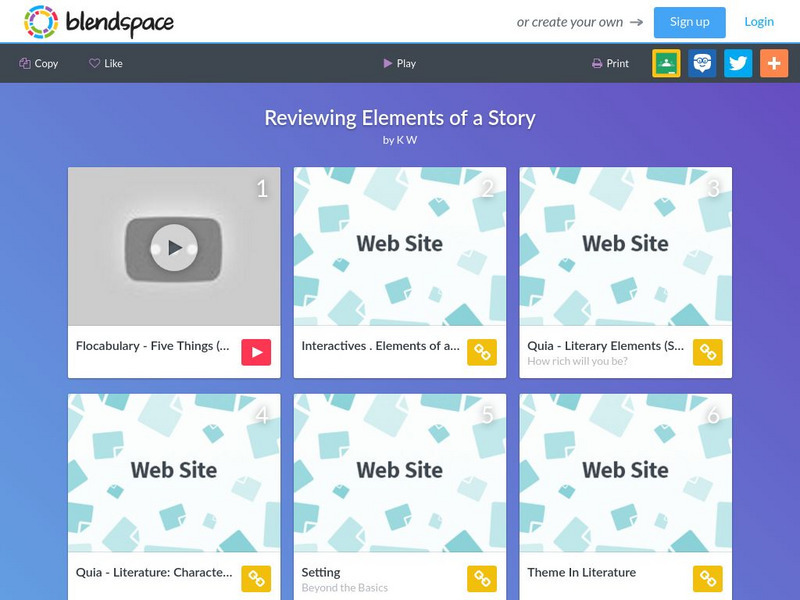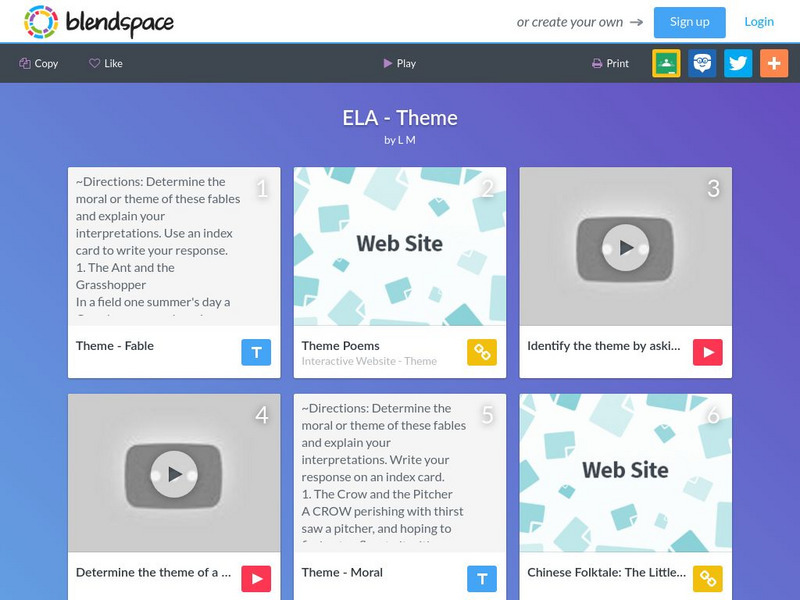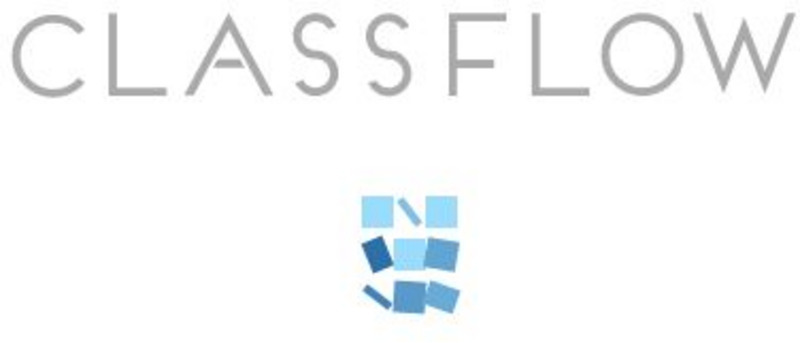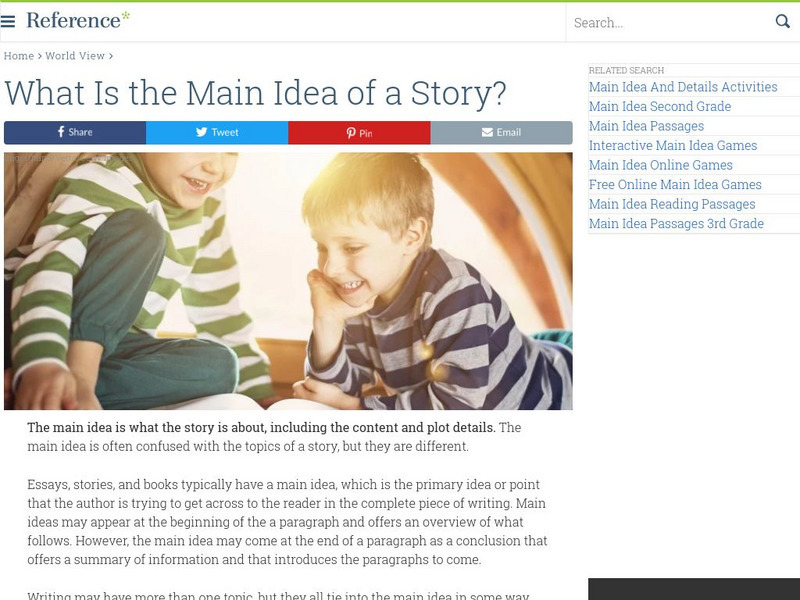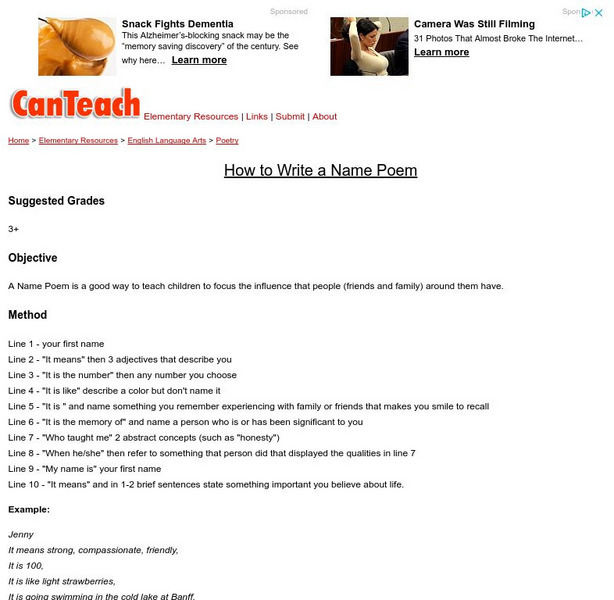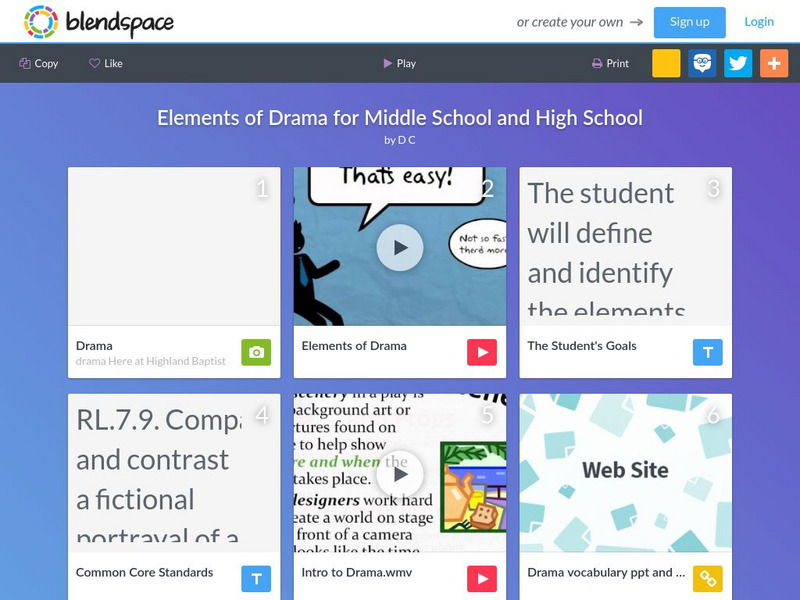TES Global
Blendspace: Reviewing Elements of a Story
A ten-part learning module with links to images, texts, websites, and videos to about story elements.
TES Global
Blendspace: Types of Plot Conflict
A six-part learning module with links to texts and videos about the six basic plot conflicts in literary texts.
TES Global
Blendspace: Narrative Writing
An eighteen-part learning module with links to images and websites to use while learning to write a narrative text.
TES Global
Blendspace: Ela Theme
A six-part learning module with links to texts, websites, and videos on determining theme.
TES Global
Blendspace: Main Idea
A learning module with six links to images and videos on finding the main idea of a text.
TES Global
Blendspace: Main Idea
Six links to pictures, videos, text, and web sites about how to identify the main idea of a text.
TES Global
Blendspace: Rl5.3 Fables: Analyzing Theme, Story Elements, Text Structure
A six-part learning module with images, graphic organizers, videos, web links and more to teach students how to analyze theme, story elements, and text structure in fables.
Other
Prezi: Summarizing a Text
Slideshow provides an explanation of summarizing and describes how to make a good one.
ClassFlow
Class Flow: Poetry Diamante
[Free Registration/Login Required] Students will be able to write their own diamante poem following poem guidelines found in this flipchart.
Other
Reference: What Is the Main Idea of a Story
This reference page defines the main idea of a story and explains how it differs from topics of a story.
ClassFlow
Class Flow: Writing a Hello Poem
[Free Registration/Login Required] This flipchart guides students in the writing process to complete a poem about themselves.
ClassFlow
Class Flow: Poetry Introduction
[Free Registration/Login Required] This flipchart introduces several types of poetry, gives the elements and examples of each type. The types of poetry include color poetry, limericks, free verse, and couplets.
Can Teach
Can Teach: Writing a Bio Poem
This site describes how a Bio poem can be used to teach young scholars to focus on the characteristics of a person or an animal, anything or anyone really. It requires the student to put themselves in the subject's shoes. Lesson plan...
Can Teach
Can Teach: How to Write a 5 W Poem
This site describes how a 5W poem is a good way to teach children to identify and focus on the five W's of a story or an event. Lesson plan indicated for 1st grade and above.
Can Teach
Can Teach: How to Write an "I Am" Poem
This is a template for "I Am" poetry. Learners will focus on their own characteristics as they create an autobiographical poem.
Can Teach
Can Teach: How to Write a Name Poem
This site describes how a Name Poem is a good way to teach children to focus the influence that people (friends and family) around them have. Lesson plan indicated for 3rd grade and above.
Can Teach
Can Teach: How to Write a Cinquain
At the most basic level a cinquain is a five line poem or stanza. Here are two variations. Lesson plan indicated for 1st grade and above.
Can Teach
Can Teach: How to Write a Diamond Poem
This is a good poem format to help teach adjectives, verbs, and nouns. Lesson plan indicated for 2nd grade and above.
TES Global
Blendspace: Elements of Drama for Middle School and High School
A six-part learning module with links to images, videos, texts, and websites to use while learning the elements and types of drama.
Quizlet
Quizlet: Story Elements Match
Match each story element with its example as you race against the clock in this online matching game.
Quizlet
Quizlet: Story Elements Quiz: 6th Grade Honors: Flashcards
These interactive flashcards provide definitions for different story elements.
Other
Web Worksheet Wizard: Narrative and Descriptive Prompts
Come and check out this list of narrative and descriptive writing prompts. These can be used as springboards for your writing.


